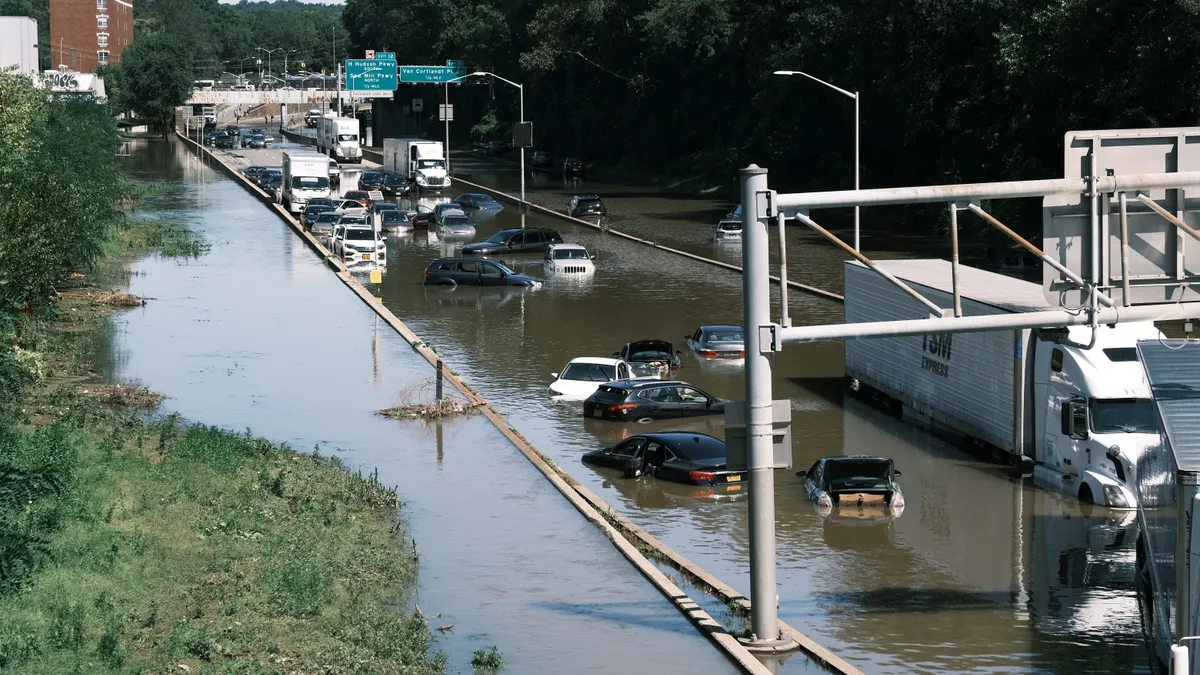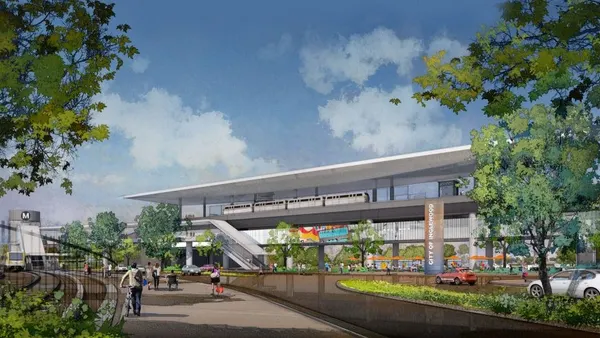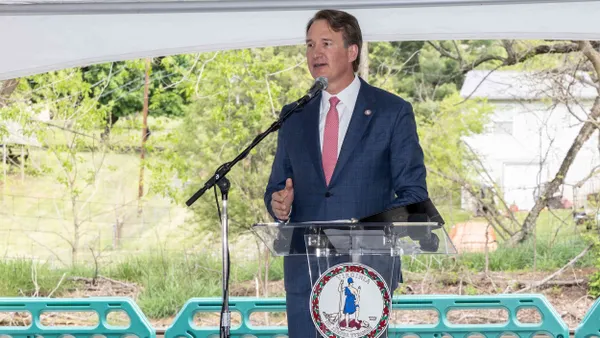Dive Brief:
- More than 20 major federal agencies, including the U.S. Environmental Protection Agency (EPA) and Department of Housing and Urban Development (HUD), came out last week with new climate adaptation plans that have implications for cities.
- The plans stem from an executive order from President Joe Biden aiming for a whole-of-government approach to addressing climate change. The idea is to “embed adaptation and resilience planning and implementation" throughout agencies' programs and operations, and to continually update those plans.
- The plans detail changes in how agencies administer programs, maintain their facilities, and use their reach "to have a really positive effect on communities across the country," said Beth Gibbons, executive director of the American Society of Adaptation Professionals, which connects organizations and individuals working toward climate resilience in different sectors and communities.
Dive Insight:
While steps to cut greenhouse gas emissions and slow global warming have grown more common across federal, state and local governments, adaptation efforts also continue to emerge.
For instance, the New York City Council last week voted that the city must adopt a climate adaptation plan, to be updated every 10 years, addressing extreme heat, wind, rain and other potential hazards. New York City recently faced its first-ever flash flood emergency during Hurricane Ida, a storm that killed at least 13 of its residents.
After the deprioritization of climate change mitigation and readiness efforts under the Trump administration, the new batch of federal agency plans outlines goals with potential impacts in cities.
The EPA plan, for example, says the agency wants to work with local governments to advance resilience and environmental justice efforts as well as modernize its financial assistance programs "to encourage climate-resilient investments across the nation." EPA says it will prioritize the most vulnerable populations in this work.
HUD leaders intend to collect building-level data to map climate risks and environmental justice concerns, informing strategies with a focus on underserved communities. The department says it will "work to assess the effectiveness of current building efficiency codes and recovery programs and identify resilience best practices that the agency can adopt to promote investments in climate resilience." HUD also says it will strengthen floodplain management regulations.
Meanwhile, the Department of Transportation identified a range of notable potential climate change impacts, including more frequent and severe flooding of underground tunnels and low-lying infrastructure, heat-induced rail buckling and expansions and degradation of paved surfaces, air traffic disruption due to severe weather, and worsened driver and operator performance due to adverse weather-related fatigue. Priority actions include incorporating resilience into DOT grant and loan programs.
Within the Department of Homeland Security's plan are five priority actions, one of which involves providing incentives for state and local governments to adopt modern building codes, including through continuation of the Building Resilient Infrastructure and Communities program.
Now that the plans are out, "it's really incumbent on the administration to be following that up with the kind of staff support and coordination that is needed to have these plans not just all exist in silos, but really be coordinated under a strategy that's going to be meaningful for everyone in every community," Gibbons said.
Separately, the Center for Climate and Energy Solutions, a climate change solutions-focused nonprofit, recently put out a federal policy brief calling for the U.S. government to more robustly support local climate resilience efforts through measures that range from making chief resilience officer a permanent White House position to facilitating climate risk disclosures that would promote related investments in communities and households.












